|
|
Post by dbostrom on Feb 5, 2021 5:29:36 GMT
We've just had a detailed inspection done on our rig. While our rigger's eagle eyes were not needed for it he did point out that the mast (this is "performance" version) is set up to take an additional stay. The location of this is seeming high enough to qualify as a "Solent" which kind of figures given that there's no obvious means of attaching another backstay to balance a lower stay on the mast. (is that even necessary? I've read conflicting opinions).
We often end up sailing in sporty conditions in early spring and late fall. Due to the local scenario this often involves short seas and a hence a lot of boat motion, and of course having some sail up really helps with that let alone other factors such as "if the engine stops we're not in trouble." However it's obvious that the foresail isn't very happy when furled so as to handle 30 knots. It's not built for this, in several ways. Meanwhile running with only the main up is one of the very few situations where this boat can (ahem) sometimes gripe a bit, is a little less sure on her feet even when reefed.
So, we get by and it's not a matter of do or die, but having an option up front would be nice.
The seeming Solent attachment is so far up the mast that I wonder if it's marginal for use in a more traditional trysail/stormsail arrangement where it seems CE a bit farther aft is the desired outcome. So I'm wondering about that.
As this Selden rig is doubtless common to all SO39ip at least (and maybe shoal variants as well), I'm wondering if anybody else has exploited this option for whatever reason, and how that went?
|
|
|
|
Post by element on Feb 5, 2021 17:28:02 GMT
Ah, the 2nd forestay for a Cutter/Solent rig. One of my favourite topics. On our previous boat (an Etap 34s) we had already a removable forestay. It was a factory option, but not fitted on our 34 footer when we bought her. The first season when coming back from the Baltic, we faced unexpected force 7 headwinds. We learned that sailing upwind with a deeply furled 140% genua in these conditions (30 knots of wind, more than 3 meter swell) was almost impossible. Also we came to the conclusion that to change in these conditions to a smaller jib on a furling is a nightmare. So we installed a 2nd removable forestay after the first season to fly a heavy weather jib with hanks which is designed for the job. So not only less square meters, but a much more flatter sail shape and strong, thicker cloth. In the 10 years we had this boat, we used it not often (maybe one or two times per year), but when set, we were extremely happy with it. Sailing upwind in 6 Bft or higher is still not my favourite, but when we had to/wanted to, the boat sailed upwind, faster, higher to the wind and with less heel. I can recall a close-hauled overnight sail from the Netherlands to the English East coast with true wind in the 20-30 knot range. We were not only faster then other boats who left IJmuiden, but because we could sail 5-10 degrees higher we were many ours earlier in Lowestoft then similar sized boats with furled headsails. And sailing with force 7-8 upwind was still possible (I put a slap reef in the working jib), with the reassurance that we could replace the working jib for a storm jib when wind would go to around 40 knots or more. Thankfully this was never needed.  So when we bought the 39iP, a 2nd forestay was one of the first things to be installed. Especially because the Performance rig is more powerful and we now already make >300 miles trips where conditions can become unexpectedly worse. As mentioned by dbostrom, the mast of a 39iP was already fitted with a fitting for a 2nd forestay. And the previous owner had already professionally installed the gear to guide the force from the deck fitting below. The only thing we had to do is ask our rigger to fit the removable stay. It is stored near the starboard shroud fitting and can be tensioned with a winchard tensioner: 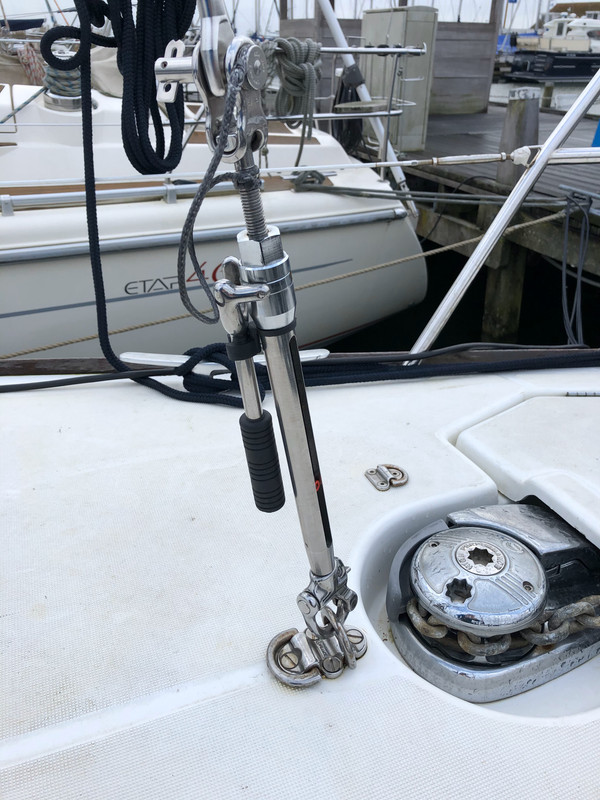 The forces below are guided to the hull with a small stay with is visible when you remove the cover to access the anchor winch: 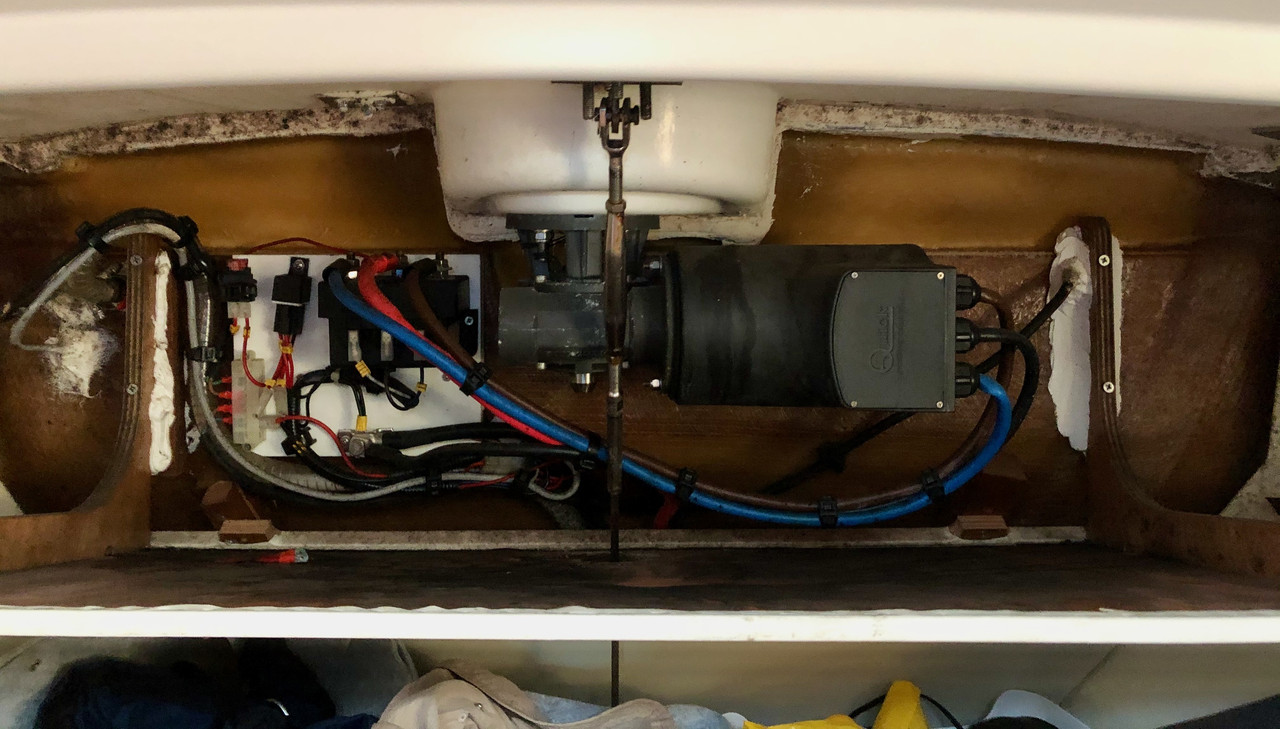 This stay is finally connected to a mouting plate on the bulkhead of the anchor locker, which is extra reinforced by a bar which is connected with the bottom of the boat: 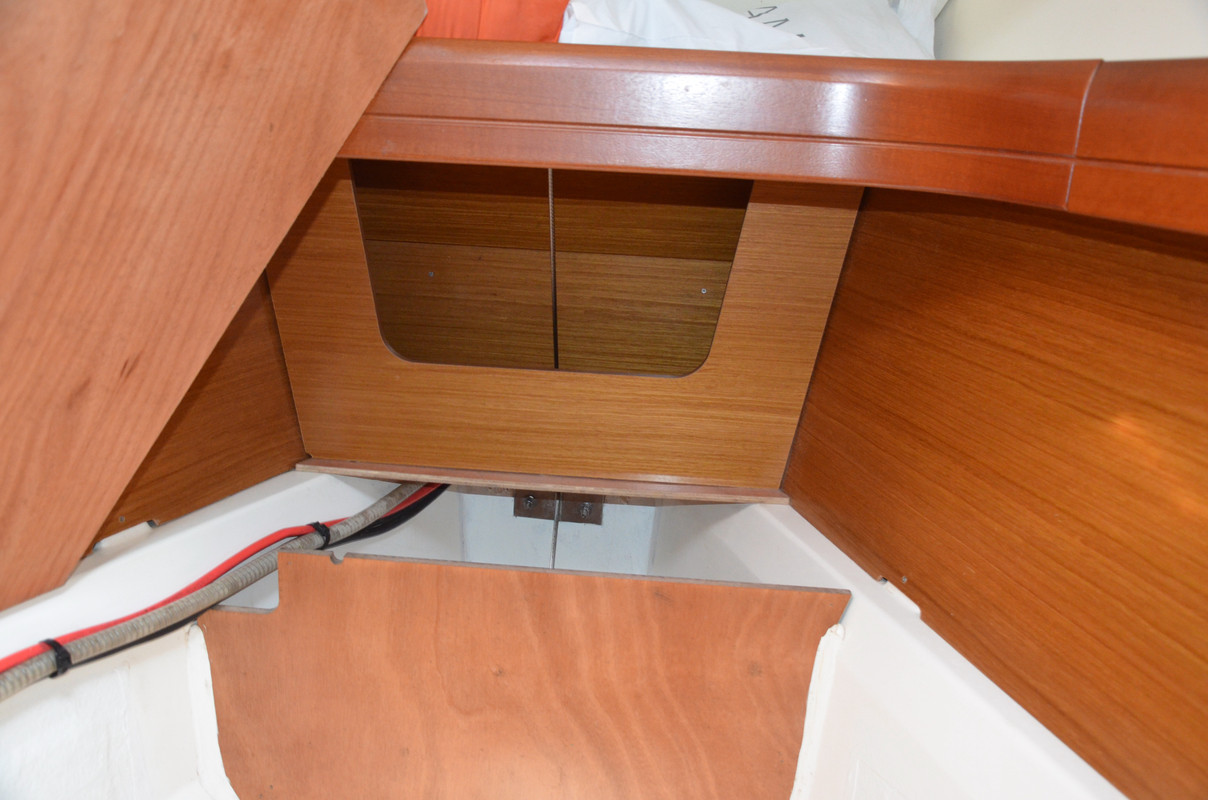 When set, we can fly a working jib of about 15m2 with hanks. And we have a storm jib of about 7 m2 which we never hope to use. 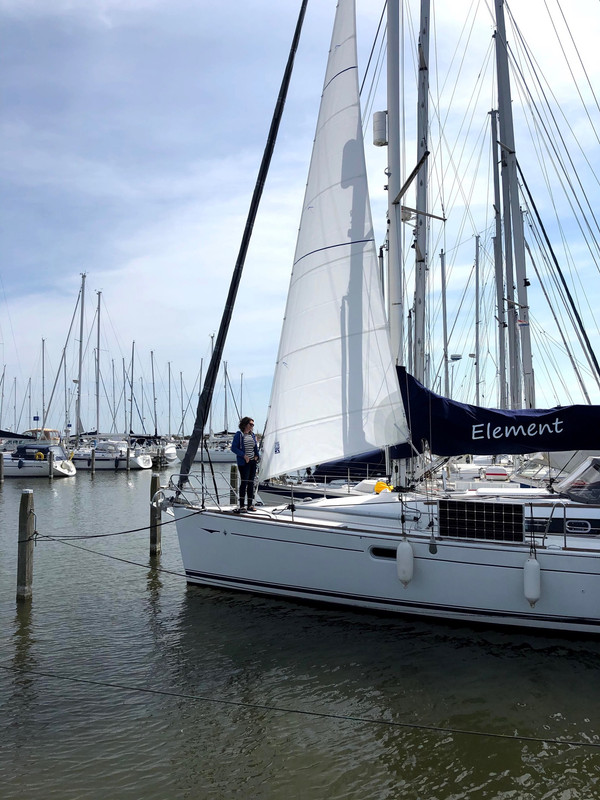 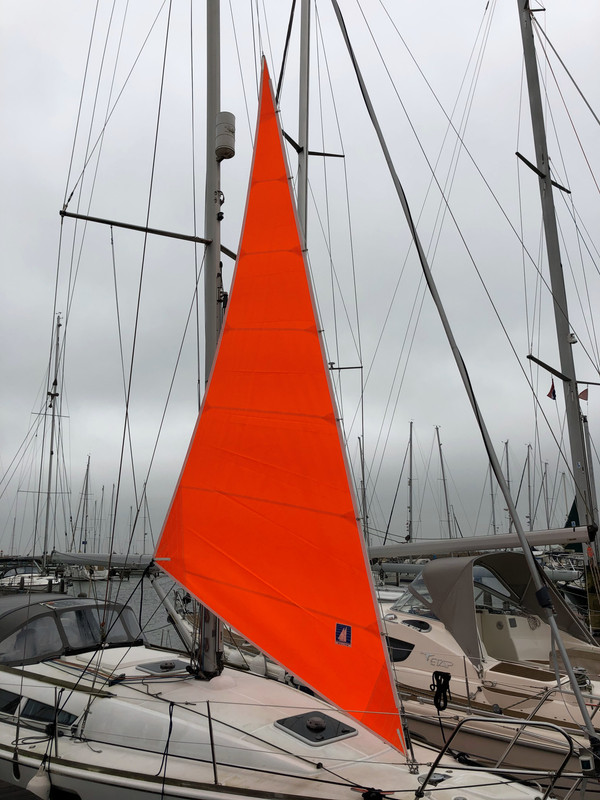 Hope this helps, Element. |
|
|
|
Post by dbostrom on Feb 5, 2021 19:56:16 GMT
Thanks loads, Element. That's a comprehensive and extremely helpful write-up and best of all not speculation and accompanied by a complete implementation in photographs. Sweet. Your experience with beating on a furled foresail is exactly like ours, and the conditions you're describing are just what I'm talking about. Weirdly, this kind of sailing is if I'm honest my favorite in terms of drama and excitement without any threat of an uncontrolled gybe or broaching (speedy surfing downwind being a different kind of thrill), so being able to do it without feeling as though I'm abusing the boat and foresail would be a nice add. Not a crazy idea then, and the height of the mast attachment turns out not to be a deal-breaker. Why "suffer*" needlessly when a remedy is so close to hand? Thanks again. * Leaving aside as usual that these problems are all voluntary.  |
|
|
|
Post by dbostrom on Feb 5, 2021 20:06:53 GMT
Also the funny thing is that I have a massive Wichard d-ring already installed just where yours is, with a backing plate, for the dual purpose of jackline and anchor snubber attachment.
That arrangement can be upgraded to carry force down as you've so nicely illustrated. That's an appealingly clean arrangement.
|
|
|
|
Post by MartyB on Feb 6, 2021 4:18:05 GMT
Glad to see the one review of what that person did. As I was going to say, if you do this, make sure it is removable when not in use. I have a mini forestay, and it is a PITA when using a jib larger than about 130LP or there about. As the clew can get caught up going around the stay. My base is just behind the foward hatch, going up about to first of two spreaders. I have a fairly light built mast, so a mini stay is needed to keep pumping down.
Some folks have put a adjustable bottom on it so you can bend the mast some in windier conditions. I can see doing what the previous person did with the mini/solent stay and having it adjustable too.
marty
|
|
|
|
Post by dbostrom on Feb 6, 2021 4:35:11 GMT
Thanks for that tip, Marty. Full convergence: the rigger also suggested that removable is the way to go.
|
|
|
|
Post by dbostrom on Apr 10, 2021 1:45:01 GMT
Element, I'm told that I "deserve" this rig for my birthday. I'm not so sure about my virtues but I won't delve into that aspect further.
I'm thinking to slavishly imitate your implementation because it's such a clean, straight and parsimonious arrangement.
Is there anything you'd have done differently, in retrospect and having become thoroughly familiar with any emergent quirks etc.?
|
|
elementje
New Member
Posts: 2
Jeanneau Model: SO39i Performance
Country: the Netherlands
|
Post by elementje on Apr 11, 2021 8:03:31 GMT
This is Mrs. Element. Good on you for your virtues. Mr. Element has his virtues too, which bought him some new Lithium batteries last year. And as our whole crew enjoys the increased battery capacity, I'm sure your whole crew will enjoy the new rig as well. It's so comfortable to be able to lessen sails and be able to sail upwind quite comfortably with more wind.
We have used the 2nd removable forestay just a couple of times last season. Went very well, easy to set up. And below deck everything seems to be in order. So, no, can't think of anything we would do differently. Only thing I can think of is while in port... the stay can make quite some noise while put away, "slamming" against the spreaders. Depending on wind strenght and direction one has to try a bit how tight or loose the stay has to be constrained. Or simply use good earplugs while sleeping...
|
|
|
|
Post by element on Apr 11, 2021 8:05:56 GMT
dbbostrom: congrats with your birthday and our virtues  Mrs. Element has already answered your question as well but here also my 2 cents: I think it is a good choice. For longer cruising and/or heavy weather/sailing upwind nothing beats a flat, small, strong and easy to install sail on hanks. Frankly, in hindsight, I can't really think of anything what would better be done differently. But as mentioned before, the previous owner had already let done the most complex part of the installation (guiding the force of the stay under deck to a strongpoint). We just had ordered the forestay and spanner. As you said, the 39iP mast was already set up for and additional stay. Are you going to do the work yourselves or will you ask a rigger? Although I am not afraid to do things myself I would ask a professional to do the more constructual work. And let a good sailmaker measure and make the heavy weather jib. I have chosen for the hanks which can be easily clipped on with one hand. 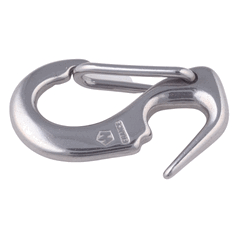 I am happy with this type, although other prefer the traditional type with make clipping off a bit more easy. We did use the heavy weather jib only twice last season, so not too much experience under sail with the set up. But I was extremely pleased so far with handling and performance. The only consideration is that I maybe will install inf***ers for closed hauled sailing. Because the inner forestay is way behind the forestay and I use the same foresail track for the sheeting, the angle between sail and centre line is bigger. As a result, the jib starts to loose power a bit on a close hauled course when the main sail trim would still enable to sail a few degrees more upwind. |
|
|
|
Post by dbostrom on Apr 12, 2021 23:41:49 GMT
Thanks very much to all elements! Yes, aside from the purely mechanical parts involving transmitting force down to a strong point I'll be staying inside my limited envelope of competency. Hanging about and witnessing the rigging repair/refit on our boat this past layup was a refresher course on how much I don't know. Our rigger will be adjusting turnbuckles, that's for sure. And our sail maker is a gem, especially as he usually (9:10) tells me "you don't need that" but in this case said "I know how you guys sail and you could actually benefit from this rig." His judgement and my motivated reasoning are in sweet harmony, for once.  Hopefully it'll be OK if I have to ask for a couple of extra photos, in case I get stuck. |
|
|
|
Post by pimsalabim on Sept 6, 2021 7:04:47 GMT
Ah, the 2nd forestay for a Cutter/Solent rig. One of my favourite topics....... Hi Element, I want to make a similar kind of construction, with the double folded padeye. Do you have a picture of the counter plate for the double folded padeye? On the pictures I can't see how it was made. Thanks in advance! Pim |
|
|
|
Post by element on Sept 6, 2021 21:03:05 GMT
Hi Element, I want to make a similar kind of construction, with the double folded padeye. Do you have a picture of the counter plate for the double folded padeye? On the pictures I can't see how it was made. Thanks in advance! I will take some more pictures next time when we are on our boat. |
|
|
|
Post by element on Sept 18, 2021 15:31:53 GMT
|
|
jaminb
Junior Member

Posts: 23
|
Post by jaminb on Sept 19, 2021 17:30:06 GMT
This all looks very interesting and an upgrade I think i definitely need! Probably a stupid question but what about sheets for the additional/new foresail/storm sail? Can you use the existing genoa sheets? Are the adjustable fairleads on the side decks sufficient or do you need to fit some further inboard on the coach roof? If the original genoa sheets are suitable how do you stop the genoa unfurfurling?
thanks Ben
|
|
|
|
Post by element on Sept 19, 2021 18:07:24 GMT
We use a separate set of sheets. This makes it easier to change from and to the normal foresail.
However, if the normal sail would be secured with for instance some ball sail ties, the sheets of the genua could be used.
Our sailmaker ensured we could use our standard genuarail.
But I plan to install some inhaulers to bring the heavy weather jib more inwards when sailing really close-hauled.
|
|
|
|
Post by pimsalabim on Oct 4, 2021 7:51:56 GMT
Thankyou! very helpfull  |
|
|
|
Post by johanliljeros on Aug 17, 2022 20:12:58 GMT
Hi Element, I'm looking into doing something like this. Would you mind sharing how the beam securing the bottom end of the stay is secured to the hull? You are writing something about how there is a chainplate on the anchor locker bulkhead and how that chainplate then is secured to a beam secured to the hull. How is that secured to the hull? Do you have a picture or explanation? Thanks in advance! Here you go: 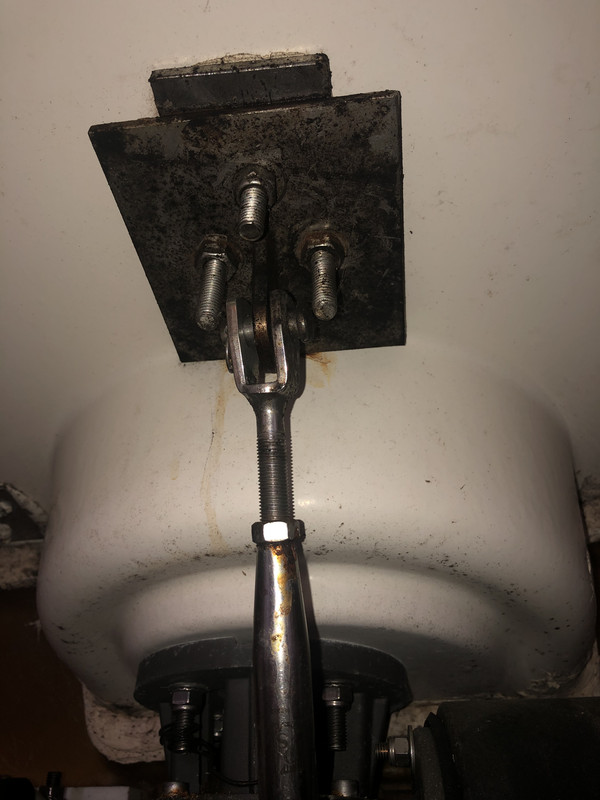  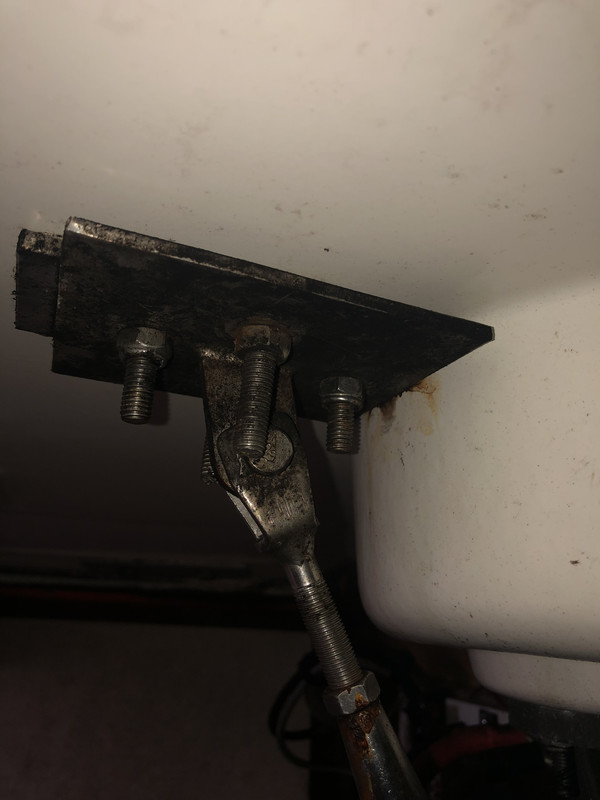 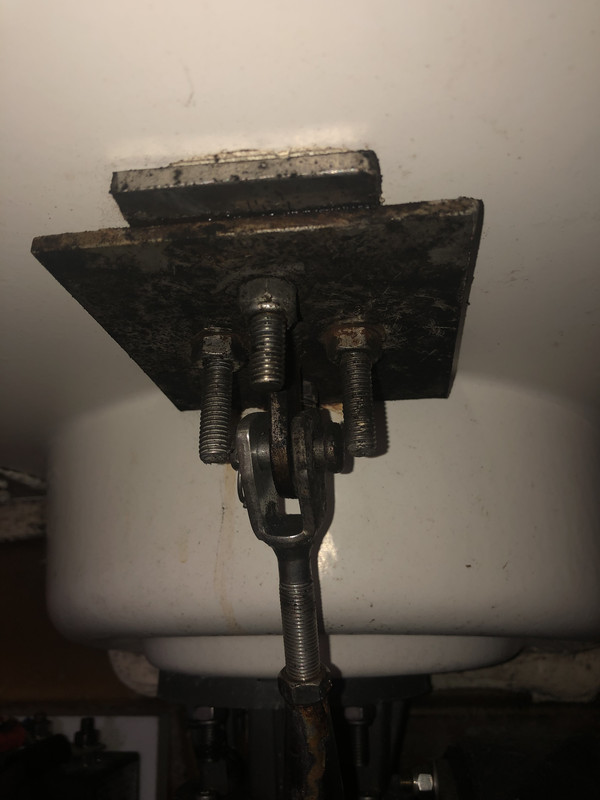 |
|
|
|
Post by element on Aug 20, 2022 15:51:51 GMT
Here some pictures.
First a bit more detail of the chainplate on the bulkhead of the anchorlocker: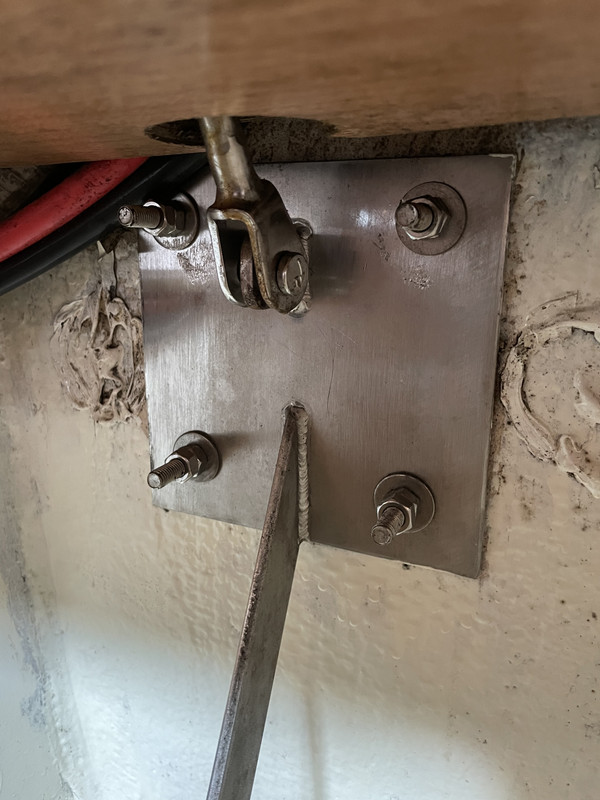 And here how this chainplate is secured via a bar to the bottom of the hull The first owner had this done but I guess the bar above is welded to a piece of metal because a “bulb” is visible. And this all is laminated on the hull with several layers of glass mats 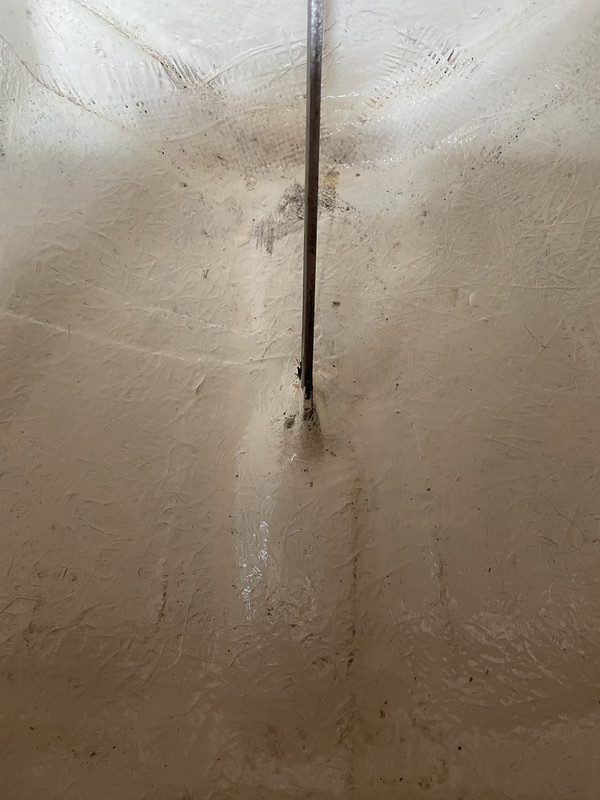 Hope this helps.
|
|
|
|
Post by MalcolmP on Aug 20, 2022 21:46:42 GMT
There is a great image of a 39iP leaving Yarmouth Harbour on the IOW in boisterous conditions flying a storm job from an inner forestay here: photos.app.goo.gl/KXiobpt78JVuSyd1A |
|
|
|
Post by murkydregs on Jan 16, 2024 2:31:05 GMT
This is an idea that I've been looking into for my SO37... I came across this interesting article: StormsailRig.pdf (866.07 KB) |
|



















